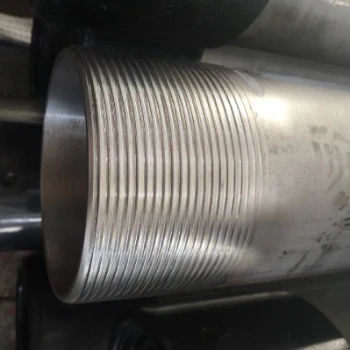- Afrikaans
- Albanian
- Amharic
- Arabic
- Armenian
- Azerbaijani
- Basque
- Belarusian
- Bengali
- Bosnian
- Bulgarian
- Catalan
- Cebuano
- Corsican
- Croatian
- Czech
- Danish
- Dutch
- English
- Esperanto
- Estonian
- Finnish
- French
- Frisian
- Galician
- Georgian
- German
- Greek
- Gujarati
- Haitian Creole
- hausa
- hawaiian
- Hebrew
- Hindi
- Miao
- Hungarian
- Icelandic
- igbo
- Indonesian
- irish
- Italian
- Japanese
- Javanese
- Kannada
- kazakh
- Khmer
- Rwandese
- Korean
- Kurdish
- Kyrgyz
- Lao
- Latin
- Latvian
- Lithuanian
- Luxembourgish
- Macedonian
- Malgashi
- Malay
- Malayalam
- Maltese
- Maori
- Marathi
- Mongolian
- Myanmar
- Nepali
- Norwegian
- Norwegian
- Occitan
- Pashto
- Persian
- Polish
- Portuguese
- Punjabi
- Romanian
- Russian
- Samoan
- Scottish Gaelic
- Serbian
- Sesotho
- Shona
- Sindhi
- Sinhala
- Slovak
- Slovenian
- Somali
- Spanish
- Sundanese
- Swahili
- Swedish
- Tagalog
- Tajik
- Tamil
- Tatar
- Telugu
- Thai
- Turkish
- Turkmen
- Ukrainian
- Urdu
- Uighur
- Uzbek
- Vietnamese
- Welsh
- Bantu
- Yiddish
- Yoruba
- Zulu
Understanding Tubing Crossovers in Oil and Gas Industry Applications and Technologies
Understanding Tubing Crossover A Key Element in Oil and Gas Operations
In the oil and gas industry, the term tubing crossover refers to a critical process involving the conversion and management of various types of tubing used in extraction and production. This process is essential for optimizing operations and ensuring the efficient flow of hydrocarbons from underground reservoirs to the surface.
What is Tubing Crossover?
Tubing crossover involves the transition from one type of tubing to another in a well system. This is often necessary due to various factors, such as changes in pressure, temperature, or fluid composition. The tubing systems used in oil and gas wells serve to convey fluids extracted from the underground reservoir to the surface facility, and the characteristics of these fluids can vary widely. As a result, operators may need to switch between different sizes, materials, or types of tubing to accommodate these changes, enhancing the overall production efficiency and safety.
Types of Tubing Used in Oil and Gas Operations
The selection of tubing for specific applications depends on various criteria, including the type of reservoir, the physical and chemical properties of the fluids, and environmental considerations. Common tubing types include
1. Production Tubing This is the primary conduit for oil or gas to reach the surface. It needs to withstand high pressures and corrosive environments. 2. Lift Tubing Used in artificial lift systems, this tubing helps transport fluids from the wellbore to the surface, overcoming pressure differentials. 3. Injection Tubing Applied in secondary recovery methods (like water or gas injection), this tubing permits the insertion of fluids into the reservoir to maintain pressure and enhance recovery rates.
Why is Tubing Crossover Important?
The importance of tubing crossover cannot be overstated
. Several factors contribute to its significancetubing crossover

1. Optimizing Production Different reservoir conditions may require different tubing systems to maximize production rates. For instance, low-pressure reservoirs may benefit from smaller tubing, which reduces friction loss and enhances flow rates. 2. Maintaining Safety The structural integrity of the tubing is vital. Inadequate or improper tubing can lead to breaches, leaks, or blowouts, posing significant safety hazards and environmental risks.
3. Enhancing Efficiency Facilitating the transition between tubing types allows for a more adaptive and responsive approach to production. This flexibility can result in a significant increase in operational efficiency, reducing downtime and costs.
The Process of Tubing Crossover
Executing a tubing crossover involves careful planning and engineering. Operators must assess the current well conditions, evaluate the appropriate tubing materials and sizes, and devise a strategic plan for the transition.
Typically, the process includes
1. Evaluation Collecting data on the existing system, including pressure profiles, fluid characteristics, and operational parameters. 2. Design Engineering the crossover solution, which may involve customizing connections or select tubing materials to withstand the new conditions. 3. Implementation Rigging up the crossover operation, often involving specialized tools and techniques to safely remove old tubing and install new tubing. 4. Testing Conducting pressure and integrity tests to verify that the new tubing system is operating as expected and can handle the operational demands.
Conclusion
In summary, tubing crossover is a vital aspect of oil and gas operations that ensures the appropriate management of fluid transport systems within wells. By understanding the intricacies of tubing types, potential applications, and the methodology behind crossover procedures, operators can enhance efficiency, safety, and production rates. As the industry continues to evolve, the adoption of advanced technologies and methodologies in tubing crossover will be critical for effective resource management and sustainable production practices.
-
Well Casing Extension Couplings – Applications and InstallationNewsJun.06,2025
-
Types of Crossover Subs in Drilling & CompletionNewsJun.06,2025
-
Key Features of High-Quality Tubing Pup JointsNewsJun.06,2025
-
Installation and Maintenance Tips for Steel Couplings for PipeNewsJun.06,2025
-
How to Select the Right Pup Joint for Oil & Gas OperationsNewsJun.06,2025
-
Applications of Stainless Steel Pipe CouplingsNewsJun.06,2025







